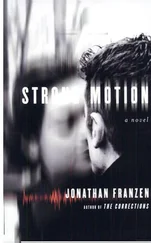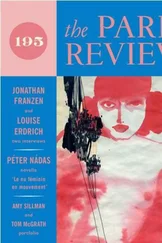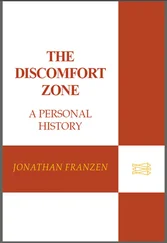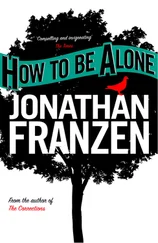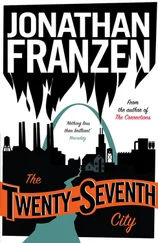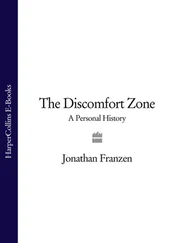The scientific community simply wasn’t ready to consider that senile dementia might be more than a natural consequence of aging. In the early fifties there was no self-conscious category of “seniors,” no explosion of Sun Belt retirement communities, no AARP, no Early Bird tradition at low-end restaurants; and scientific thinking reflected these social realities. Not until the seventies did conditions become ripe for a reinterpretation of senile dementia. By then, as Shenk says, “so many people were living so long that senility didn’t feel so normal or acceptable anymore.” Congress passed the Research on Aging Act in 1974, and established the National Institute on Aging, for which funding soon mushroomed. By the end of the eighties, at the crest of my annoyance with the clinical term and its sudden ubiquity, Alzheimer’s had achieved the same social and medical standing as heart disease or cancer — and had the research funding levels to show for it.
What happened with Alzheimer’s in the seventies and eighties wasn’t simply a diagnostic paradigm shift. The number of new cases really is soaring. As fewer and fewer people drop dead of heart attacks or die of infections, more and more survive to become demented. Alzheimer’s patients in nursing homes live much longer than other patients, at a cost of at least forty thousand dollars annually per patient; until they’re institutionalized, they increasingly derange the lives of family members charged with caring for them. Already, five million Americans have the disease, and the number could rise to fifteen million by 2050.
Because there’s so much money in chronic illness, drug companies are investing feverishly in proprietary Alzheimer’s research while publicly funded scientists file for patents on the side. But because the science of the disease remains cloudy (a functioning brain is not a lot more accessible than the center of the earth or the edge of the universe), nobody can be sure which avenues of research will lead to effective treatments. Overall, the feeling in the field seems to be that if you’re under fifty you can reasonably expect to be offered effective drugs for Alzheimer’s by the time you need them. Then again, twenty years ago, many cancer researchers were predicting a cure within twenty years.
David Shenk, who is comfortably under fifty, makes the case in The Forgetting that a cure for senile dementia might not be an entirely unmitigated blessing. He notes, for example, that one striking peculiarity of the disease is that its “sufferers” often suffer less and less as it progresses. Caring for an Alzheimer’s patient is gruelingly repetitious precisely because the patient himself has lost the cerebral equipment to experience anything as a repetition. Shenk quotes patients who speak of “something delicious in oblivion” and who report an enhancement of their sensory pleasures as they come to dwell in an eternal, pastless Now. If your short-term memory is shot, you don’t remember, when you stoop to smell a rose, that you’ve been stooping to smell the same rose all morning.
As the psychiatrist Barry Reisberg first observed twenty years ago, the decline of an Alzheimer’s patient mirrors in reverse the neurological development of a child. The earliest capacities a child develops — raising the head (at one to three months), smiling (two to four months), sitting up unassisted (six to ten months) — are the last capacities an Alzheimer’s patient loses. Brain development in a growing child is consolidated through a process called myelinization, wherein the axonal connections among neurons are gradually strengthened by sheathings of the fatty substance myelin. Apparently, since the last regions of the child’s brain to mature remain the least myelinated, they’re the regions most vulnerable to the insult of Alzheimer’s. The hippocampus, which processes short-term memories into long-term, is very slow to myelinize. This is why we’re unable to form permanent episodic memories before the age of three or four, and why the hippocampus is where the plaques and tangles of Alzheimer’s first appear. Hence the ghostly apparition of the middle-stage patient who continues to be able to walk and feed herself even as she remembers nothing from hour to hour. The inner child isn’t inner anymore. Neurologically speaking, we’re looking at a one-year-old.
Although Shenk tries valiantly to see a boon in the Alzheimer’s patient’s childish relief from responsibility and childlike focus on the Now, I’m mindful that becoming a baby again was the last thing my father wanted. The stories he told from his childhood in northern Minnesota were mainly (as befits a depressive’s recollections) horrible: brutal father, unfair mother, endless chores, backwoods poverty, family betrayals, hideous accidents. He told me more than once, after his retirement, that his greatest pleasure in life had been going to work as an adult in the company of other men who valued his abilities. My father was an intensely private person, and privacy for him had the connotation of keeping the shameful content of one’s interior life out of public sight. Could there have been a worse disease for him than Alzheimer’s? In its early stages, it worked to dissolve the personal connections that had saved him from the worst of his depressive isolation. In its later stages it robbed him of the sheathing of adulthood, the means to hide the child inside him. I wish he’d had a heart attack instead.
Still, shaky though Shenk’s arguments for the brighter side of Alzheimer’s may be, his core contention is harder to dismiss: senility is not merely an erasure of meaning but a source of meaning. For my mother, the losses of Alzheimer’s both amplified and reversed long-standing patterns in her marriage. My father had always refused to open himself to her, and now, increasingly, he couldn’t open himself. To my mother, he remained the same Earl Franzen napping in the den and failing to hear. She, paradoxically, was the one who slowly and surely lost her self, living with a man who mistook her for her mother, forgot every fact he’d ever known about her, and finally ceased to speak her name. He, who had always insisted on being the boss in the marriage, the maker of decisions, the adult protector of the childlike wife, now couldn’t help behaving like the child. Now the unseemly outbursts were his, not my mother’s. Now she ferried him around town the way she’d once ferried me and my brothers. Task by task, she took charge of their life. And so, although my father’s “long illness” was a crushing strain and disappointment to her, it was also an opportunity to grow slowly into an autonomy she’d never been allowed: to settle some very old scores.
As for me, once I accepted the scope of the disaster, the sheer duration of Alzheimer’s forced me into unexpectedly welcome closer contact with my mother. I learned, as I might not have otherwise, that I could seriously rely on my brothers and that they could rely on me. And, strangely, although I’d always prized my intelligence and sanity and self-consciousness, I found that watching my father lose all three made me less afraid of losing them myself. I became a little less afraid in general. A bad door opened, and I found I was able to walk through it.
THE DOOR IN QUESTION was on the fourth floor of Barnes Hospital, in St. Louis. About six weeks after my wife and I had put my mother in touch with the social worker and gone back east, my oldest brother and my father’s doctors persuaded him to enter the hospital for testing. The idea was to get all the medications out of his bloodstream and see what we were dealing with underneath. My mother helped him check in and spent the afternoon settling him into his room. He was still his usual, semipresent self when she left for dinner, but that evening, at home, she began to get calls from the hospital, first from my father, who demanded that she come and remove him from “this hotel,” and then from nurses who reported that he’d become belligerent. When she returned to the hospital in the morning, she found him altogether gone — raving mad, profoundly disoriented.
Читать дальше
Конец ознакомительного отрывка
Купить книгу



